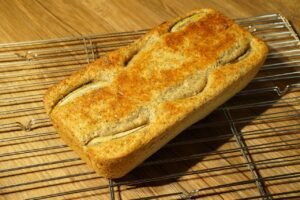There are over a hundred different forms of arthritis. The most common are gout, rheumatoid arthritis, and osteoarthritis.
Basic Def: Arthritis can be understood as a category of disorders that cause discomfort and inflammation in the joints and connective tissues. Once diagnosed, arthritis can last a lifetime.
In most situations, the harm is irreversible. Arthritis can sometimes be treated surgically. Arthritis can be managed, but it cannot be cured. To reduce discomfort and devastating abnormalities, prompt diagnosis and treatment are required.
Gout
It is the easiest type of arthritis to identify and treat. Excess uric acid in the body, as revealed by blood tests, causes needle-like crystals to develop in joints, causing significant inflammation.
The injured joint becomes very heated, swollen, and painful. Acute, painful episodes usually begin in the big toe, although they can also affect the feet, wrists, knees, and elbows.
Possible Origins
- Primary gout is caused by an inherited chemical deficiency in the body.
- Disturbances such as when uric acid is created in excess or quicker than the kidneys can remove it (secondary gout)
Possible Symptoms
- Severe joint pain (big toe, wrist, ankle, thumb)
- Shiny, swollen, and painful to the touch joints
These are the hallmarks of a severe attack.
Dietary Management that can be Beneficial
- Eat a low purine diet, with a focus on not overeating protein-rich meals, even if they are not purine-rich.
- Consume a low-fat diet to increase uric acid excretion.
It should be noted that when protein is digested within the body, it eventually contributes to the uric acid pool.
Osteoarthritis
It is the most frequent form, and it is a wear and tear illness that occurs with aging. The elastic tissue softens and wears away, occasionally revealing the underlying bone. Weight-bearing joints such as the hips, knees, and spine, as well as fingers and large toes, are the most usually afflicted.
Osteoarthritis primary —–The onset has no discernible cause. It manifests itself earlier in life and primarily affects the tiny joints.
Osteoarthritis secondary —–This is the effect of wear and tear. It develops later in life in big or frequently utilized joints.
Possible Causes
Mechanical abrasion. It is caused by a mix of age, persistent joint inflammation, and regular wear and tear.
Heredity. Some people inherit poorer cartilage or have chemical imbalances that predispose them to osteoarthritis.
Possible Symptoms
- Pain at a certain location
- Stiffness at a certain location
- loss of ability to move joints easily
- Appearance of bony enlargements of joints, particularly the fingers
Dietary Management that Can Be Beneficial
Consume a well-balanced diet. Food preparations that are readily handled and conveyed to the mouth by painful arthritic fingers should be included.
Arthritis rheumatoid
It is the most incapacitating and damaging form, frequently affecting the entire body. This condition frequently inflames and thickens the joint lining and tissues. It can affect the heart, lungs, eyes, skin, blood vessels, and muscles, in addition to the joints.
Possible Symptoms
- Fatigue
- Muscular rigidity
- Appetite loss
- Weight reduction
- Inflammation of the joints
- Fever is present.
Dietary Management that Can Be Beneficial
If you are losing weight and have a fever, eat a high-calorie diet rich in fruits and vegetables (balanced diet).
To improve a faltering appetite, eat tiny frequent feedings rather than three large meals.
As your appetite improves, reduce your diet to three normal meals.

